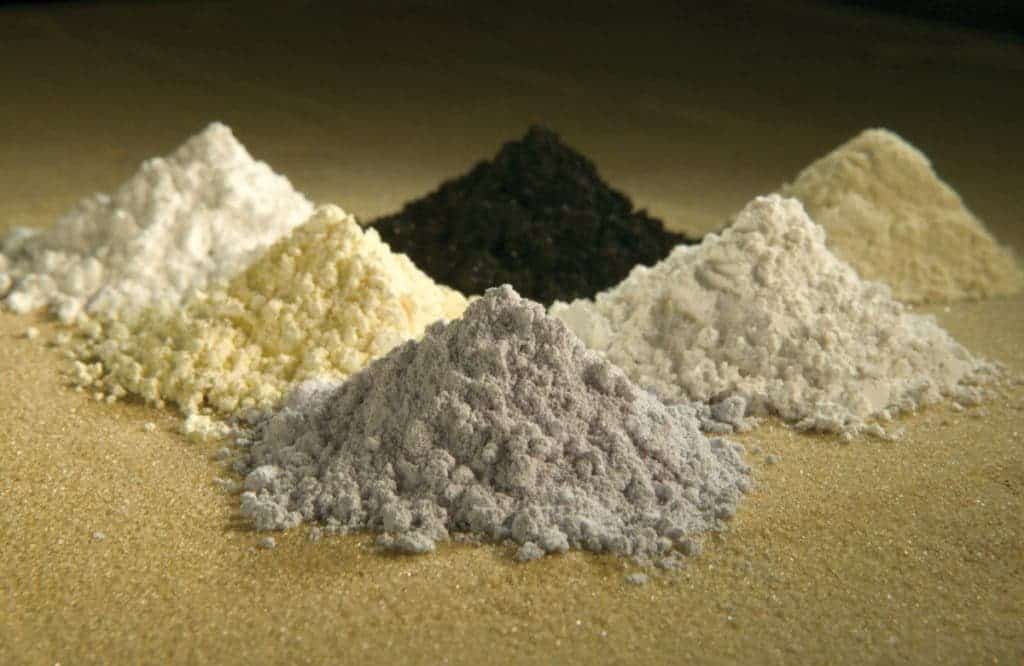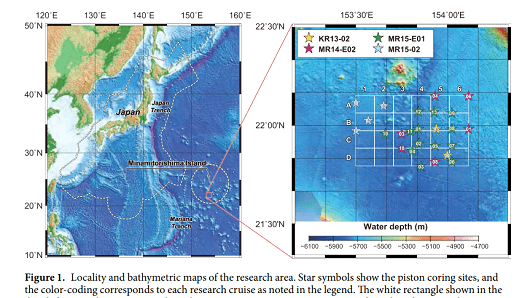Deep-sea deposits found off the coast of Japan could supply the global demand for rare earth elements virtually forever, according to a new study. The deposit is estimated to hold more than 16 million tons of rare earth elements.

Image credits Peggy Greb / US department of agriculture / Wikimedia.
Japanese researchers have mapped a huge deposit of some of today’s most valuable and economically-vital resources: rare earth elements. There should be enough of them lodged in deep-sea muds within Japan’s exclusive economic zone waters to feed global demand on a “semi-infinite basis,” they report.
Sunken booty
Rare earth metals are key to producing high-tech products: everything from smartphones to electric vehicles requires some amount of these elements to function, and we don’t know of any viable substitutes we can swap them for. As their name implies, they’re also quite rare. Taken together, these two facts make these materials highly sought-after, and quite expensive.
Currently, the world relies on China to supply most of the rare earth elements on the market. However, this often raises problems: Beijing has shown itself willing to block the export of these products during times of diplomatic tension. For example, back in 2010, China severely limited the quantity of these elements it exported to Japan following the arrest of the captain of a Chinese trawler. He had a run-in with the Japan Coast Guard near the Japan-administered Senkaku Islands, which are also claimed by China.
Japanese manufacturers had to suffer massive rare earth element shortages in the aftermath of the incident, a move that essentially amounted to China wielding the minerals as a diplomatic cudgel in a border dispute.
Considering this, the discovery of the massive deposits — in Japan’s exclusive economic zone, no less — is bound to make Tokyo happy, and raise worry in Beijing.
Mud-cheap technology

Image credits Scientific Reports.
However, for us, that’s neither here nor there. What is important to us is the sheer estimated size of this deposit — which, for us as consumers, should translate to much lower costs once extraction begins at the site
The team, comprised of several universities, businesses, and government institutions, surveyed the western Pacific Ocean near Minamitori Island and estimated that a single sample area of the deposit contains more than 1.2 million tons of “rare earth oxide” — i.e. rare earth element ores.
The study, conducted jointly by Waseda University’s Yutaro Takaya and the University of Tokyo’s Yasuhiro Kato, extrapolates that the whole 2,500-sq km deposit area should contain 16 million tons of the valuable elements, and concludes that “has the potential to supply these metals on a semi-infinite basis to the world”. That’s equivalent to 780 years’ worth of yttrium supply, 620 years of europium, 420 years of terbium and 730 years of dysprosium, it added.
If the estimations prove true, the deposit could cover the world’s requirements for these elements for hundreds of years to come. The researchers also detail a new and more efficient method of refining the valuable elements from the mud, which should make them even cheaper on the global market.
“The enormous resource amount and the effectiveness of the mineral processing are strong indicators that this new (rare-earth rich mud) resource could be exploited in the near future,” the study said.
The paper “The tremendous potential of deepsea mud as a source of rare-earth elements” has been published in the journal Scientific Reports.






